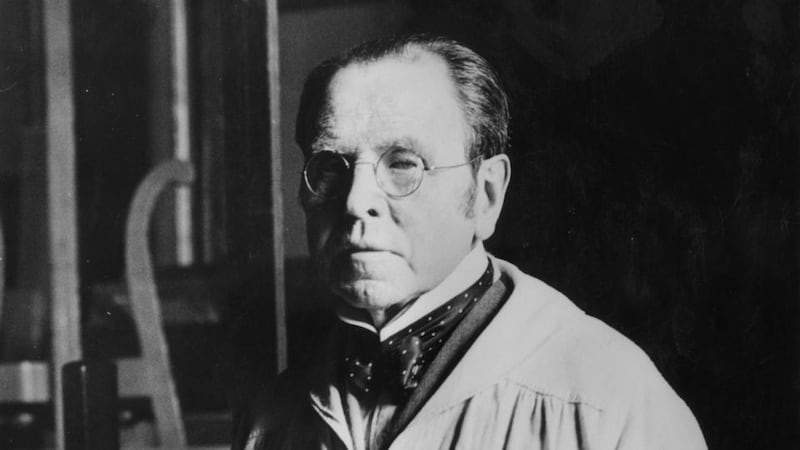In July 1916, during his appeal against his death sentence for his role in the Easter Rising, Roger Casement wrote to his family, asking, “Who was the painter in the jury box?”
The painter was a rather unlikely presence: Sir John Lavery, born into a Catholic family in Belfast, was renowned for his portraits of English high society, and his studio had been visited by royalty. He had been invited to record the appeal trial by the presiding judge, Sir Charles Darling, a former client of his. Yet, as Casement noted, the painter “came perilously near aiding and comforting” the prisoner in the way he “eyed Mr Justice Darling’s delivery” of the verdict confirming the death sentence. Casement also noted that Lavery’s wife, Hazel, looked “very sad” at the same moment. The uneasy relationship between Lavery’s position as part of the imperial artistic establishment and his growing sympathies with Irish nationalism would produce a painting at once monumental and hard to place.
Lavery’s record of this moment in history is literally the work of an insider: it is possible only because Lavery was respectable enough to be given privileged access to the trial. Lavery later claimed that Darling had commissioned the work. Yet the result is not the grand image of imperial justice that might have been intended. The conventions of the genre are honoured in the large scale – three metres wide and two metres high – and the meticulous portraits of dozens of individuals. A sense of dramatic moment is created by the slanting light and by the clock that approaches the fatal hour of 12.

But the judges are almost statuesque. All the animation is given to Casement’s defence counsel. And the centre of the picture is occupied by Casement himself, who seems simple and human amid the pomp. He looks not at his judges but at the viewer. This is to be the judgment not of a mere court but of history.
This ambivalence marked the fate of the painting itself. Lavery did not complete it until the 1930s. If Darling commissioned it he did not pay for it: it remained in Lavery’s studio until his death, in 1941. The painter left it in his will to the National Portrait Gallery, in London, and the Royal Courts of Justice, but neither institution especially wanted it. After years in storage at the NPG it was hung in the office of the senior clerk of the court of criminal appeal in London, removed from the public gaze, for fear of arousing the wrong kind of attention from “people who considered Casement a martyr”.
The painting was lent to the Honorable Society of King’s Inns, in Dublin, in 1951. The message from the lord chancellor’s office accompanying the loan said, “We can adopt the suggestion of lending it to the King’s Inns on indefinite loan, which means that we can forget to ask for its return.”
Yet Lavery surely knew what he was doing when he left High Treason to British institutions in his will. For what he had produced was not an Irish painting or a British one but an image of two histories intertwined and at odds.
You can read more about this week's artwork in the Royal Irish Academy's Dictionary of Irish Biography; see ria.ie










